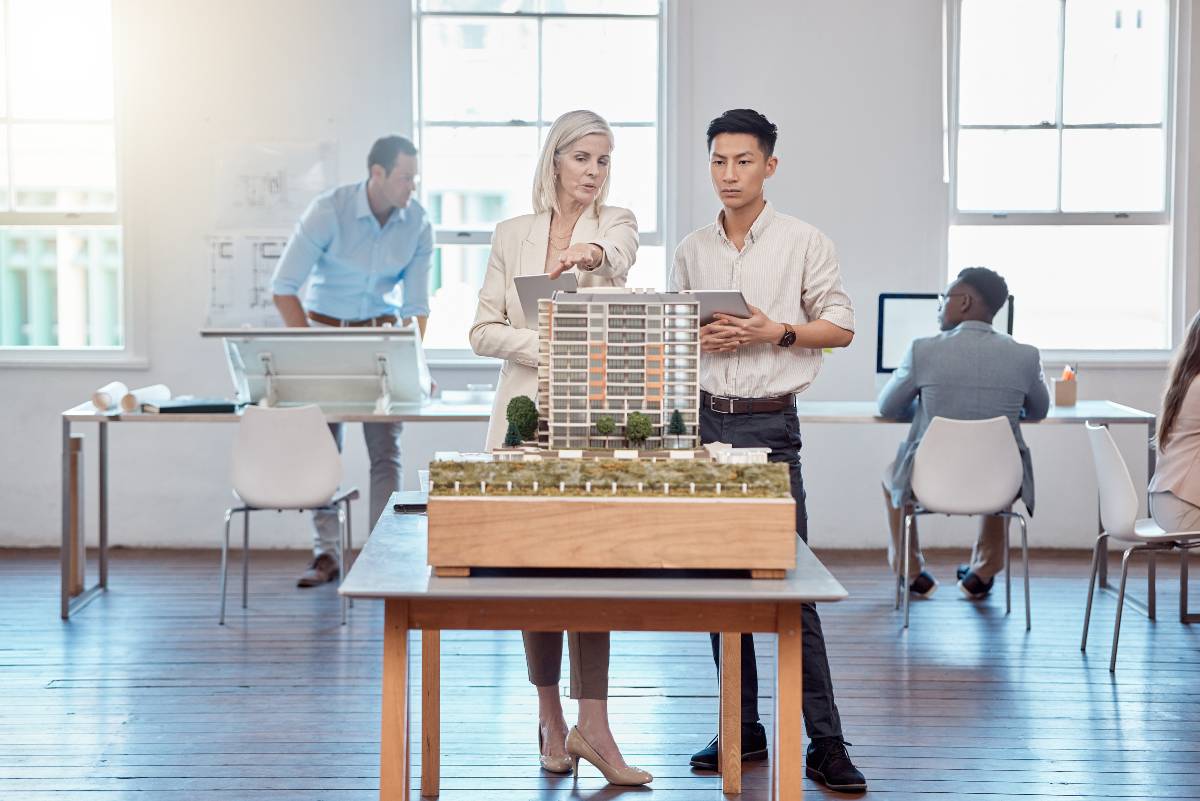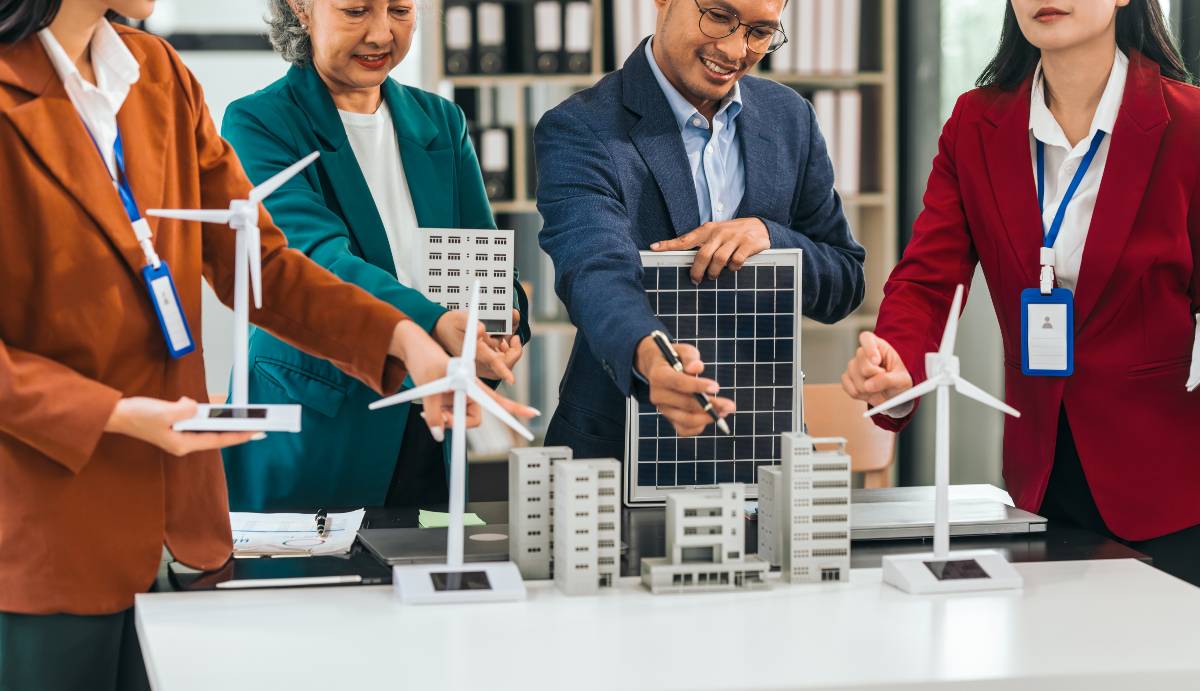As a commercial real estate specialist catering to business owners and landlords for over 18 years, I’ve seen incredible transformations in how modern buildings are designed and operated with the emergence of smart building technologies. These innovative systems present tremendous potential for enhancing sustainability, efficiency, cost savings, and overall performance.
I’ve helped many clients navigate the complexities of evaluating and implementing the right smart building solutions to meet their specific needs. In this article, I’ll provide an overview of these game-changing technologies and how you can harness them to take your buildings to the next level.
Key Takeaways
- Smart building technologies leverage IoT sensors, data analytics, and automated controls to optimize energy efficiency, sustainability, and performance.
- Key benefits include energy savings, lower operating costs, improved safety and comfort, and meeting sustainability goals.
- The main components include sensors, analytics software, building automation systems, and integration platforms.
Table of Contents
Smart Building Technologies In Your Business
The term “smart building technologies” broadly refers to integrated systems that rely on connected sensors, data analytics, automation, and controls to optimize various functions within a building. This includes monitoring and regulating energy usage, lighting, HVAC systems, equipment performance, and even security systems.
The core benefit is enabling buildings to operate smarter and more efficiently. Smart buildings can seamlessly collect data via IoT sensors and meters, analyze performance metrics in real time, and automatically adjust systems to improve comfort, air quality, safety, and energy efficiency.
As a building owner or manager, transitioning to an intelligent building provides tangible advantages:
- Energy savings of up to 30-50%
- Sustainability through lower emissions
- Enhanced safety, security, and compliance
- Increased tenant comfort and productivity
- Optimized equipment performance and lifecycle through predictive analytics
- Water savings from leak monitoring and automated faucets
- Waste reductions with smart recycling and food disposal
Key Components and Enabling Technologies (400 words)
Several key components work together to make buildings smart and responsive in an optimal way:
IoT Sensors and Meters
Smart buildings are outfitted with all kinds of sensors and data collection devices. Light sensors monitor and automatically adjust indoor and outdoor lighting. Occupancy sensors track space utilization. Air quality sensors keep ventilation and HVAC operating at healthy levels. Meters track electricity, gas, and water consumption. Each sensor and meter supplies data to inform real-time automation and analytics.
Data Analytics Software
At the heart of any smart building is powerful data analytics software that aggregates and analyzes all the data streaming in from sensors across the building. Advanced analytics, often integrating artificial intelligence and machine learning algorithms, are able to identify usage and performance patterns and anomalies. They can predict failures, optimize equipment schedules and usage, and alert building managers about issues.
Building Automation Systems
Armed with data insights from analytics, building automation systems can smoothly operate infrastructure like lighting, heating, cooling, ventilation and security systems. They regulate this equipment to optimize for sustainability, efficiency, comfort, and safety based on parameters like occupancy levels, weather, operating schedules, and equipment conditions.
Building Information Modeling (BIM)
BIM software centralizes data visualization and building operations into one collaborative interface. It provides 3D models of spaces overlaid with real-time sensor data on temperature, occupancy, equipment efficiency, etc. Facility managers can use this to monitor operations or pinpoint problem areas.
Financial and Sustainability Benefits
Transitioning to smart sustainable buildings powered by IoT and analytics provides major cost and environmental advantages:
Energy, Water and Waste Reductions
Intelligent monitoring and regulation of heating, cooling, lighting and other systems based on granular real-time data offers significant optimization of energy, water and waste. Smart buildings use up to 30-50% less energy than conventional buildings. Lower utility bills translate into major operating cost reductions.
Lower Operating and Maintenance Costs
In addition to direct savings on utilities, smart buildings facilitate preventative maintenance and rapid fixes through fault detection and alerts about potential equipment issues. This avoids costly equipment downtime and emergency repairs. Building automation also reduces labor costs associated with manual oversight.
Government Incentives and Faster Payback
Given their environmental benefits, governments offer generous tax rebates, grants and incentives for integrating smart green building technologies. The costs typically pay for themselves in under 5 years through energy savings – providing a rapid return on investment!
Use Cases and Applications
Smart connected technologies enhance almost every aspect of buildings operations and oversight, with use cases including:
Monitoring and Optimizing Energy Usage
Smart metering and analytics provide granular visibility into energy consumption patterns. Building managers can identify times and areas of excessive use and optimize these through automation adjustments and user policies.
Predictive Maintenance of Equipment
Sensors continually monitor temperature, vibration, and other operational parameters for rooftop units, elevators, Generators, etc. Advanced analytics predicts likelihood of failures so issues can be prevented through proactive maintenance.
Ensuring Safe and Healthy Building Environments
Air quality sensors combined with smart ventilation modulation maintain ideal temperatures, humidity, and air quality for human health and productivity. Predictive analytics also allows for closer Monsoror of critical systems like backup power and fire suppression.
Creating Grid-Responsive and Net Zero Buildings
Smart buildings can dynamically optimize for on-site solar energy usage and shift non-critical loads to off-peak times based on signals from electric utilities to support the grid. Smart technologies enable buildings to generate as much or more power than they consume.
Enhancing Workplace Experience and Productivity
Features like smart lighting automatically adjust illumination and color temperature based on circadian rhythms to reduce eye strain. Smart assistants can book conference rooms, while occupancy sensors prompt automated alerts to replenish supplies or sanitize spaces.

Implementation Guidance
Transitioning to smart building tech requires careful planning regarding:
Readiness Assessment and Goal Setting
Begin by auditing existing infrastructure, pain points, and future objectives around sustainability, costs, and performance. This guides technology selection and benchmarks progress.
Selecting the Right Building Automation Systems
With clear goals identified, thoroughly evaluate vendors and packages for sensors, data platforms, analytics software, and controls integration. Focus on security, scalability, and flexibility for future needs.
Integration with Existing Infrastructure
Most facilities have legacy building infrastructure. Ensuring new smart systems properly interface with older HVAC, electrical, plumbing and IT systems avoids stranded assets and optimization barriers.
Change Management System and Skills Training
The workforce needs education on deriving value from smart systems. Create robust documentation and training programs focusing on data literacy, analytics interpretation, fault diagnoses, and troubleshooting protocols.
Implementation Challenges
While promising, smart buildings face certain adoption hurdles:
Interoperability Issues
Disparate systems from different vendors using proprietary protocols can undermine integration and performance. Meticulous planning and standards adoption is essential.
Cybersecurity Risks
Connectivity and data aggregation also pose cyber risks of hacking and data breaches. Robust network security layers, controlled access, and backups are critical safeguards.
Costs of Retrofitting Existing Buildings
For older buildings, installing extensive sensing, cabling and automation systems can be prohibitively expensive and disruptive. Creative financing schemes can spread out costs matched against energy savings.
Improving Energy Efficiency with Smart Technologies
Smart building technologies help improve energy efficiency in many ways. Sensors can track how much electricity and heat is used in the building. Smart software analyzes this data to find ways to reduce waste. It makes adjustments automatically through connected thermostats, lights, and appliances to optimize energy use. For example, smart lighting turns off lights when not needed or when enough natural light is available. Smart shades open and close to best use sunlight and reduce heating/cooling needs. Overall, buildings can use 20-40% less energy just by using smart technologies to track usage patterns and automate adjustments. This saves money on utility bills too.
Enhancing Building Operations through Automation
Smart technologies also improve how building equipment and systems operate. Sensors can monitor when equipment like elevators, generators, or AC units need maintenance. Rather than wait for them to break, smart software spots issues early so they can be fixed. This avoids expensive downtime or failures. It also allows building managers to schedule maintenance at the best times. Smart automation also means less manual work needs to be done like turning on lights, adjusting temperatures floor by floor, monitoring equipment function. This makes operations smoother and buildings easier to manage.
Optimizing Occupant Comfort and Productivity
By constantly monitoring indoor conditions like air quality, lighting, and temperature, smart building tech keeps occupants comfortable, healthy, and productive. Rooms self-adjust based on the number of people and their needs. Lights dim or brighten so vision stays sharp. Air circulation increases to provide oxygen and remove germs if CO2 builds up from groups. Windows tint to optimal levels. These small adjustments add up to big benefits in terms of happier, focused, and more productive occupants be they office workers, apartment dwellers, or hospital patients.
Designing Smart Buildings for Efficiency and Sustainability
New smart buildings can be designed from scratch to maximize efficiency and sustainability. Steps include installing extensive sensor networks to collect usage data, laying connectivity cables, integrating automation systems for lighting and temperature control, ensuring roof space for solar panels, and more. Having these capabilities built in from day one allows the building to operate optimally based on conditions and needs. Designed properly, smart sustainable buildings can achieve net zero energy use, LEED green certification, and deliver ideal comfort for occupants.
Real-time Monitoring and Analytics for Building Performance
Smart buildings rely extensively on data and analytics to enhance performance. Sensors throughout the building gather usage metrics on energy, equipment operations, and environmental factors. This data feeds into software that interprets patterns in real-time. For example, it can tell if certain spaces become too hot at certain times of the day or if a motor is consuming excess energy signaling the need for repairs. Operators use dashboards that visualize this data to optimize equipment schedules, identify issues quickly, and overall keep the building running smoothly.
Integrating Smart Technology to Reduce Operational Costs
In existing buildings, smart technologies can be integrated to make operations more efficient and cost-effective. Some examples include installing smart lighting controls, connecting HVAC systems to cloud-based analytics platforms; adding sensors on major equipment to predict failures; deploying smart meters for granular tracking of gas, electricity, and water usage; and investing in building automation systems to control indoor conditions. The data and automation opportunities allow managers to reduce overhead costs related to energy, maintenance, equipment downtimes, and even staffing. The savings generated can offset the costs of installing these smart upgrades.
Advancements in Building Automation and Control Systems
Building automation and control systems will get even smarter in the coming years with AI and machine learning. They will better predict optimal temperature settings, lighting needs, and maintenance requirements based on recognizing patterns. Rather than just preset schedules, smart buildings will continuously adapt equipment used to match real occupancy and human comfort needs. Wireless sensors and controls will grow allowing easier retrofits. Voice controls via assistants may enter more building functions. As software gets smarter, more automation and optimization will happen behind the scenes to boost efficiency.
Smart Buildings Market Trends and Growth Potential
The smart buildings market has huge growth ahead. Technological improvements paired with climate change priorities are accelerating adoption. The latest research estimates smart building tech investment in commercial real estate will expand by over 80% globally in the next 3 years. Major real estate owners like Blackstone, and Brookfield already have smart technology mandates for acquisitions. Landlords leasing smart spaces can charge premium rents due to tenant demand. The revolution toward data-centered, sustainable, and resilient buildings is unfolding rapidly.
Creating Intelligent, Data-Driven Building Environments
Fundamentally, smart building environments leverage data and analytics to operate intelligently. The sensors and connectivity serve to produce useful data, while software and AI convert this into operational intelligence. Together, they create a decision-making feedback loop that makes adjustments to optimize for sustainability, efficiency, costs and human comfort needs. Buildings grow smarter and responsive in real time based on feedback from occupants and changing conditions be it weather, equipment states, or utility rates. The future points toward buildings as living organisms that continually adapt for optimal outcomes.

The Future Outlook
Smart connected technologies represent the future for how buildings will be designed, constructed and operated.
Mainstream Adoption Expected by 2030
Industry projections indicate 50% of all commercial buildings will integrate smart technologies over the next 5-7 years given rapid innovations and affordability.
Continued Innovation in AI, 5G, Robotics
Smart buildings will get even smarter and more responsive through machine learning, 5G speed connectivity, and microbots tackling hazardous inspections and repairs.
Climate Change Prioritization
With buildings contributing around 40% of carbon emissions, global commitments to combat climate change will also force the uptake of smart green buildings.
Smart connected building technologies undoubtedly herald the next evolution in constructing, managing, and working within built environments. Their demonstrated benefits around sustainability, costs, safety, and performance present a compelling value. I encourage business owners and CRE leaders to explore harnessing these innovations sooner rather than later. The future beckons.
FAQs
How do smart building technologies achieve energy savings?
Smart building tech achieves energy savings through granular monitoring of usage patterns, predictive analytics to optimize schedules and loads, and automated controls of lighting and HVAC aligned to occupancy and environmental factors. This allows buildings to consume only what is needed.
What are some key benefits of implementing smart building technologies?
Major benefits include 30-50% lower energy costs through optimization and automation; enhanced safety, compliance, and risk monitoring capabilities; increased tenant comfort and productivity; avoided costs from predictive maintenance of equipment; and support for net zero or LEED green building certification.
What are some of the main components and enabling technologies behind smart buildings?
Core components include: IoT sensors for data collection; data analytics software and machine learning algorithms to generate operational insights; building automation systems to modulate lighting, HVAC, security systems per optimized schedules; BIM/CIM software to visualize data; and integration platforms to unify disparate technologies.
How can data analytics and AI make buildings more efficient?
Sophisticated analytics transforms raw sensor data into actionable operational intelligence about usage patterns, equipment performance issues, unsafe conditions, etc. AI allows for continuous learning and predictive capabilities to guide proactive decisions about maintenance, schedules, and automation for peak efficiency.
What are some challenges faced in adopting smart building technologies?
Top challenges revolve around upfront costs, integrating new systems with legacy infrastructure, organizational change management, and cybersecurity vulnerabilities from increased connectivity and data aggregation. Careful planning and staged rollouts can effectively mitigate these issues.
How does the Internet of Things contribute to intelligent building operations?
The Internet of Things allows for the connectivity of various building systems and devices, enabling data-driven insights, remote monitoring, and optimizing building operations in real-time.
How can smart building technologies help reduce energy consumption?
Smart building technologies offer features such as energy-efficient lighting, HVAC systems optimization, and automated controls, all of which contribute to reducing energy consumption and promoting sustainability in buildings.
Conclusion
As a commercial real estate advisor with deep expertise regarding a guide to smart building technologies strategies, I’m excited to guide clients on this digital transformation journey. Schedule a consultation to discuss your portfolio objectives and develop a customized roadmap to start harnessing these powerful technologies. The future of intelligent, sustainable buildings is here!




